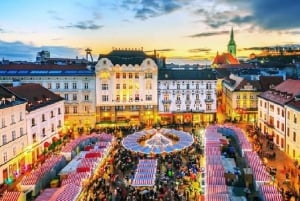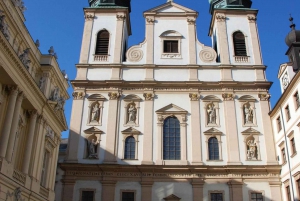Freud's Vienna
Vienna’s connection to Sigmund Freud is undeniable. Even though he was neither born, nor did he die in Vienna, he is considered one of THE most well known Viennese figures of all times.
He was born in 1856 in Moravia, today the Czech Republic and moved to Vienna with his family just when he was a child. He was a brilliant pupil at school, and very much advanced for his aged. At the age of 17 he got his diploma with honors and joined the University of Vienna (Uni Wien) immediately after that. Originally he planned to study law, but instead joined the medical faculty there, specialising on philosophy, physiology, and zoology under a Darwinist professor. Later on, he turned to neurology and became the famous "father of psychology".
Tip: Today the fabulous University of Vienna is open for students who go to their lectures – it is very easy just walk in as one of the students (no student IDs need to be shown) and join for some lectures or just to walk around to have a look at the impressive inside - you won’t be noticed and it is really interesting!
After Freud completed his studies with a MD in 1881, he started at Theodor Meynert’s psychiatric clinic at the Vienna General hospital, but had to resign from few years later because of clashes he had with his supervisor - this is when he opened his own clinic for "nervous disorders". During this time he lived in an apartment on Berggasse, 19, today the Freud museum that is well worth a visit. Here, Sigmund Freud, as a proper man of habit, used to eat lunch every day at 1 p.m., when he would leave his consulting room. His taste was very particular and he liked specific dishes: beef accompanied by seasonal veggies such as corn on the cob or asparagus. When the museum first opened in 1971, Freud’s daughter Anna donated a selection of Sigmund’s works and some original furniture from his second house in London – all of these to be now seen in his home at Berggasse: just use the public transport: take the D tram and get off at the stop "Schlickgasse".
Apart from collecting antiques and being a shopaholic, Freud also loved to walk along the Ringroad, the big boulevard surrounding Vienna’s inner city like a ring (hence the name Ringroad). When the Freud family moved to Vienna, in 1860, the construction of all the beautiful buildings you can today see on the Ringroad (like the Parliament, the City Hall, the Main University, the National Theatre, etc) had just begun. The city suddenly stopped being a medieval capital, but turned into a modern and attractive European capital – outshining many other capitals in Europe at that time. All this process was fundamental in Freud’s growth – he embraced modern times and change and made it part of his own thinking. You will understand what he must have felt as soon as you take it upon yourself to walk along the same route as this famous neurologist did in his time – it is truly impressive! If walking is not an option (approx 6 km to cover the entire Ringroad) take the Vienna "Ring Tram"; the tam will take you on a 25 minutes ride along the ring, equipped with screens and audio guides -and you will be able to see all the main highlights of Vienna’s architecture at once!
Even if Freud wasn’t a regular to the local "Vienna cafés scene", he often visited the famous Café Landtmann, also because it is just a few minutes walk from his house in the Berggasse. This Café still remains one of the most visited ones in Vienna today as the main hall is stunning and one of Vienna’s most popular coffee houses to see. Freud used to sit in the back of the main salon, where he could enjoy a good view over the whole room and make notes on his thoughts and observations.
Unfortunately, after almost eight decades living in Vienna, this city showed hostility towards Freud during the raise of Fascism in the 1930ies. Freud was Jewish, and thought his fame would escape him from being arrested by the Nazis - he was convinced the Nazi Germany would not dare to imprison such a renowned person as himself (by that time, he had already won several international awards for his works, his books were famous all around the world). But in 1938, after the Gestapo had interrogated his sister, he realized that he had no chance of survival and decided to flee and seek asylum in Britain. All his assets had been frozen by the Gestapo and he had been arrested already. It was one of his biggest followers, Princess Marie Bonaparte, who made it possible for him to escape by paying a ransom. Her connections to the Nazis were excellent so she basically bought Freud’s freedom for a price. Tragically, Freud only lived another year after his exile. He died in London in 1939, aged 83.













